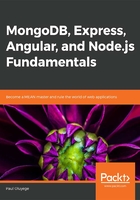
Introduction
The MEAN stack is comprised of four technologies: MongoDB, Express.js, Angular.js, and Node.js, and is known to be one of the best tools available to solve contemporary business challenges. This technology requires low maintenance costs, fewer resources, and entails less development time. Furthermore, it provides good flexibility, high scalability, and several features that help businesses deliver high performance solutions.
For developers or aspiring developers, learning MEAN is essential as it has become an indispensable tool for web applications. Additionally, businesses and developers are increasingly skipping Ruby, Python, and PHP, and choose JavaScript for development. Also, JavaScript boasts the most active developer community.
 Other stacks also exist, such as the Linux, Apache, MySQL, and PHP (LAMP) stacks. However, the flexible simplicity of the MEAN stack is highly desirable. Also, factors such as Node being super-fast and the fact that MongoDB is a compelling database that provides ease with which apps can be developed, tested, and hosted in the cloud, add to the popularity of the MEAN stack. In comparison, LAMP is MySQL-based and has a confining structure, and thus is not as popular as the MEAN stack.
Other stacks also exist, such as the Linux, Apache, MySQL, and PHP (LAMP) stacks. However, the flexible simplicity of the MEAN stack is highly desirable. Also, factors such as Node being super-fast and the fact that MongoDB is a compelling database that provides ease with which apps can be developed, tested, and hosted in the cloud, add to the popularity of the MEAN stack. In comparison, LAMP is MySQL-based and has a confining structure, and thus is not as popular as the MEAN stack.
This chapter introduces the components, libraries, and framework that make up the MEAN stack architecture. We will also describe various contemporary commercial applications that can be built with the MEAN stack. Finally, we will build web servers with Node.js and implement various features that are provided by the backend runtime environment.